
Harold Adrian Russell "Kim" Philby was a British intelligence officer and a spy for the Soviet Union. In 1963, he was revealed to be a member of the Cambridge Five, a spy ring that had divulged British secrets to the Soviets during World War II and in the early stages of the Cold War. Of the five, Philby is believed to have been the most successful in providing secret information to the Soviets.

The Office of Strategic Services (OSS) was an intelligence agency of the United States during World War II. The OSS was formed as an agency of the Joint Chiefs of Staff (JCS) to coordinate espionage activities behind enemy lines for all branches of the United States Armed Forces. Other OSS functions included the use of propaganda, subversion, and post-war planning.

William Joseph "Wild Bill" Donovan was an American soldier, lawyer, intelligence officer and diplomat. He is best known for serving as the head of the Office of Strategic Services (OSS), the precursor to the Bureau of Intelligence and Research and the Central Intelligence Agency (CIA), during World War II. He is regarded as the founding father of the CIA, and a statue of him stands in the lobby of the CIA headquarters building in Langley, Virginia.

Camp X was the unofficial name of the secret Special Training School No. 103, a Second World War British paramilitary installation for training covert agents in the methods required for success in clandestine operations. It was located on the northwestern shore of Lake Ontario between Whitby and Oshawa in Ontario, Canada. The area is known today as Intrepid Park, after the code name for Sir William Stephenson, Director of British Security Co-ordination (BSC), who established the program to create the training facility.

Sir William Samuel Stephenson was a Canadian soldier, fighter pilot, businessman and spymaster who served as the senior representative of the British Security Coordination (BSC) for the western allies during World War II. He is best known by his wartime intelligence code name, Intrepid. Many people consider him to be one of the real-life inspirations for James Bond. Ian Fleming himself once wrote, "James Bond is a highly romanticised version of a true spy. The real thing is... William Stephenson."
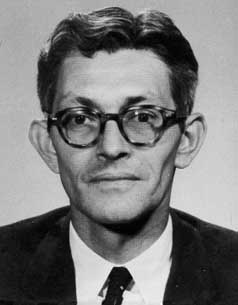
James Jesus Angleton was an American intelligence operative who served as chief of the counterintelligence department of the Central Intelligence Agency from 1954 to 1975. According to Director of Central Intelligence Richard Helms, Angleton was "recognized as the dominant counterintelligence figure in the non-communist world".

The Federal Bureau of Narcotics (FBN) was an agency of the United States Department of the Treasury, with the enumerated powers of pursuing crimes related to the possession, distribution, and trafficking of listed narcotics including cannabis, opium, cocaine, and their derivatives. Headquartered in Washington, D.C., the FBN carried out operations and missions around the world. The bureau was in existence from its establishment in 1930 until its dissolution in 1968. FBN is considered a predecessor to the Drug Enforcement Administration.
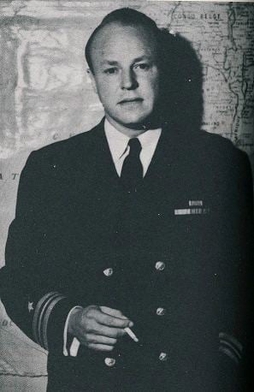
Frank Gardiner Wisner was one of the founding officers of the Central Intelligence Agency (CIA) and played a major role in CIA operations throughout the 1950s.
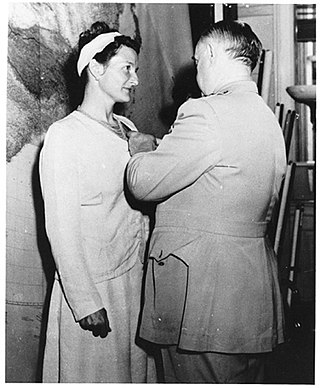
Virginia Hall Goillot DSC, Croix de Guerre,, code named Marie and Diane, was an American who worked with the United Kingdom's clandestine Special Operations Executive (SOE) and the American Office of Strategic Services (OSS) in France during World War II. The objective of SOE and OSS was to conduct espionage, sabotage and reconnaissance in occupied Europe against the Axis powers, especially Nazi Germany. SOE and OSS agents in France allied themselves with resistance groups and supplied them with weapons and equipment parachuted in from England. After World War II, Hall worked for the Special Activities Division of the Central Intelligence Agency (CIA).
There is a long history of close cooperation between the United States and the United Kingdom intelligence services; see Clandestine HUMINT and Covert Action for World War II and subsequent relationships. There are permanent liaison officers of each country in major intelligence agencies of the other, such as the Central Intelligence Agency (CIA) and the Secret Intelligence Service ("MI6"), FBI and the Security Service (MI5), and National Security Agency (NSA) and Government Communications Headquarters (GCHQ). From 1943 to 2017, the Open Source Enterprise, a division of the CIA, was run out of Caversham Park in Reading, Berkshire. American officials worked closely with their British counterparts to monitor foreign TV and radio broadcasts, as well as online information.
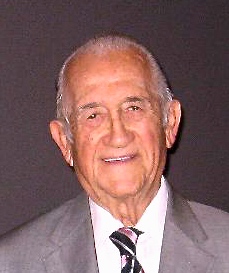
Helias Doundoulakis was a Greek American civil engineer who patented the suspension system for the at-the-time largest radio telescope in the world. During WWII he served in the United States Army and the Office of Strategic Services (OSS) as a spy.
The head of the Office of Strategic Services (OSS), William Donovan, created the X-2 Counter Espionage Branch in 1943 to provide liaison with and assist the British in its exploitation of the Ultra program's intelligence during World War II. A few months before, Donovan had established a Counterintelligence Division within the Secret Intelligence Branch of the OSS but rescinded this order upon development of the X-2. The X-2 was led by James Murphy, whose branch would have the power to veto operations of the Special Operations and Secret Intelligence Branches without explanation. Donovan modeled the Counter Espionage Branch on British Counter Espionage. With the creation of the X-2 Branch, the British insisted that it follow British security procedures to maintain the secrecy of Ultra. The X-2 established separate lines of communication for itself as a self-contained unit. By the end of World War II, the X-2 had discovered around 3,000 Axis agents.

The Secret Intelligence Service (SIS), commonly known as MI6, is the foreign intelligence service of the United Kingdom, tasked mainly with the covert overseas collection and analysis of human intelligence on foreign nationals in support of its Five Eyes partners. SIS is one of the British intelligence agencies and the Chief of the Secret Intelligence Service ("C") is directly accountable to the Foreign Secretary.
George James Doundoulakis was a Greek American physicist and soldier who worked under British Intelligence during World War II with SOE agent Patrick Leigh Fermor, and then served with the OSS in Thessaly, Greece.

George Hunter White remains one of the most controversial federal agents in American history, and highly debated subject within law enforcement circles. A lifelong Federal Bureau of Narcotics (FBN) investigator, undercover operative, spymaster, World War II hero, one of the men responsible for the capture of Lucky Luciano, known for killing suspects, and known to have consumed most of the drugs he was chasing.

The Special Operations Branch (SO) was a branch of the Office of Strategic Services during World War II that "pioneered" many of the unconventional warfare, counter-insurgency (COIN), and foreign internal defense tactics and techniques used by today's US Military Special Operations Forces (SOF). Special Operations was the American equivalent of the Special Operations Executive (SOE) of the United Kingdom.

Millard Preston Goodfellow, who often went by the name "Preston Goodfellow," was an American soldier, spy, diplomat, journalist, war correspondent, and newspaper publisher. A veteran of World War I, Goodfellow became a leading figure at the Office of the Coordinator of Information and the Office of Strategic Services during World War II.

Robert A. Solberg (Solborg) was a soldier and spy during World War I and World War II, becoming a key figure in the development of the Office of the Coordinator of Information and the Office of Strategic Services, precursor to the Central Intelligence Agency.

Garland H. Williams (1903–1993) was an American pioneer of covert investigations, military counterintelligence, white collar investigations, espionage, training and planning, and a lifelong law enforcement officer. He is a veteran of World War II and the Korean War. During World War II, Williams was integral in the training of thousands of American hopeful would-be undercover operatives and guerrilla fighters in both the Military Intelligence Division and the Office of Strategic Services.
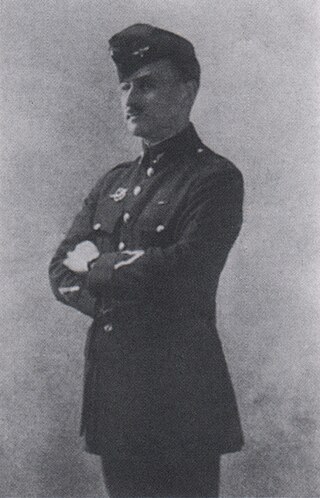
Leland Lassell Rounds was an American aviator, diplomat, spy, and soldier who fought in the skies over World War I, and was the Vice-Consular Officer at the US Embassy in Oran, Algeria during World War II, where he spied on German and Italian deployments throughout North Africa. His work was integral to the Allied victories in both wars.















